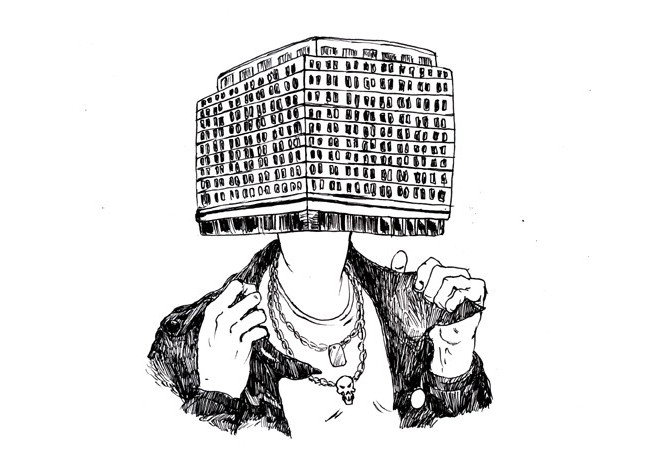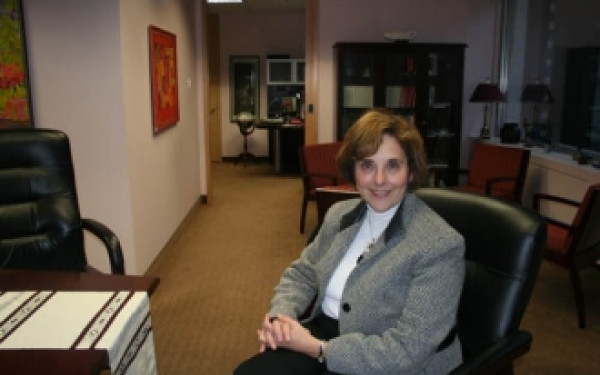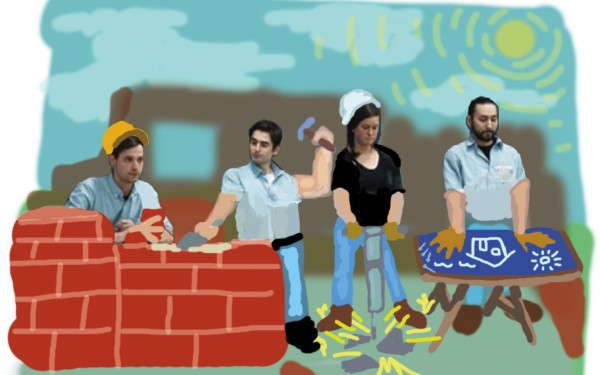Editorial
Concordia’s Identity Complex
Nobody wants to admit it when it happens, but Concordia, this might be your midlife crisis.
Nearly 40 years ago our university was but a small community college in the heart of downtown Montreal. Through the years it gained notoriety for its progressive students, its edgy politics, its protests and its fair share of scandals, like any good institution.
But the university has come a long way since its relatively humble beginnings. Today, we’re seeing a university—already one of Quebec’s biggest—expanding in more ways than just sheer numbers. But the big question is, where are we going, and what is Concordia ultimately building itself up to be?
See, a midlife crisis has a lot of strange symptoms.
For example, you might start wearing weird new clothing. As the inner workings of Concordia’s governance are being restructured, the university is also pouring money into a very noticeable aesthetic rebranding. Slowly the Hall Building is morphing, getting a stained wood and pane glass facelift to match the university’s newer downtown buildings.
Piece by shiny, lacquered piece, the university’s grungier side is being covered up. But as a smattering of buildings pops up around downtown, the lack of student space around campus has yet to be addressed.
Nearing midlife you might start buying strange, unnecessary toys, like those big “C”s that have popped up around campus, or that enormous neon sign that lights up the tunnel in the Guy-Concordia metro. You might get a car that raises some eyebrows, for example, or try to reconcile with your estranged children. These things are normal.
But different parts of Concordia are moving at different speeds. As the visual landscape changes quickly, unions face a looping cycle of negotiations, some working without a collective agreement in place—arguing little progress is made at the bargaining table.
President Alan Shepard says we can’t move forward if we’re always looking back, and while the past may have been tumultuous in our books, it was formative. And while some still see Concordia as a hotbed for liberal politics, others now see it as window dressing for our business school.
Sometimes a midlife crisis can lead to divorce, multiple divorces, or maybe even some affairs, similar to the administrative shuffling Concordia’s been engaging in over the past decade. Since 2000, the university has doled out over $10 million in severance pay to administrators. But those days might be over, with Concordia’s Board passing reforms at the beginning of the summer that put limits and safeguards on the “golden parachutes” that have grown in ConU infamy.
But with the university in such a state of flux, there’s really no better time for students to make a real imprint on this school’s future.
Partnerships are forming, a notable example being the forthcoming Sexual Assault Resource Centre, where Concordia Counselling and Development is working with a team of student volunteers headed up by the 2110 Centre for Gender Advocacy, which itself is funded directly by students. A coalition of students is also working to present the administration with criteria for food services when our contract with cafeteria provider Chartwells expires in 2015.
These new bouts of cooperation will be tests—to see if the new face of Concordia can really mean effective change resulting from students and administration working together, if Concordia’s governance reforms are for real, and if our school’s historically progressive values have a place in the new Concordia, whatever we decide to make of it.
Concordia just needs to remember that it doesn’t need to give up its youthful idealism as it learns to button a suit and tie.


_600_832_s.png)


_600_375_90_s_c1.jpg)

